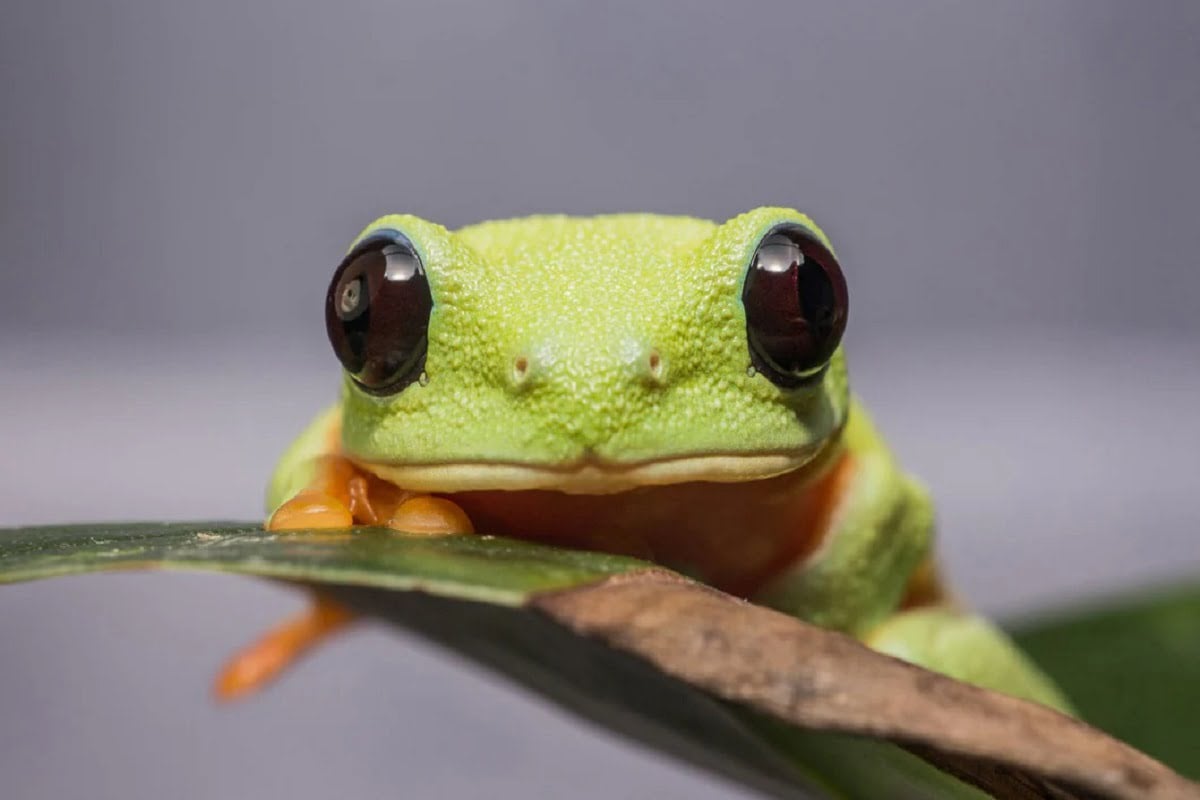The Black-eyed leaf frog is a fascinating amphibian that belongs to the tree frog family. It is also known as the Red-eyed leaf frog, because of its distinctive red eyes. These frogs are native to Central America, specifically in countries such as Honduras, Costa Rica, Panama, and Nicaragua.

Black-eyed leaf frogs are known for their unique appearance, which includes bright green skin with bold black spots. They have a triangular head with a wide mouth and a short, stocky body. The males are slightly smaller than the females and have a more slender body.
These frogs are well-adapted to their environment and are excellent climbers. They have sticky pads on their feet that help them to grip onto leaves and branches, and their long legs help them to jump from one tree to another. They are also nocturnal, which means they are most active at night.
Black-eyed leaf frogs are carnivorous, and they primarily feed on insects such as crickets, flies, and moths. They have a unique way of hunting, which involves using their tongue to catch their prey. Their tongue is covered in a sticky saliva that helps them to capture insects quickly.
One of the most fascinating things about Black-eyed leaf frogs is their reproduction process. Unlike most frogs, they do not lay their eggs in water. Instead, the female lays her eggs on the underside of leaves that overhang water. When the eggs hatch, the tadpoles drop into the water below, where they continue to develop into adult frogs.
Sadly, Black-eyed leaf frogs are facing threats in the wild due to habitat loss and climate change. As their natural habitat is destroyed, these frogs have fewer places to live, breed, and find food. In addition, the changing climate can affect their breeding patterns and food availability, making it difficult for them to survive.
Conservation efforts are underway to protect the Black-eyed leaf frog and other endangered species. Organizations are working to preserve their habitats and raise awareness about the importance of these unique creatures. By supporting these efforts, we can help to ensure that the Black-eyed leaf frog and other endangered species can thrive in the wild for generations to come.
